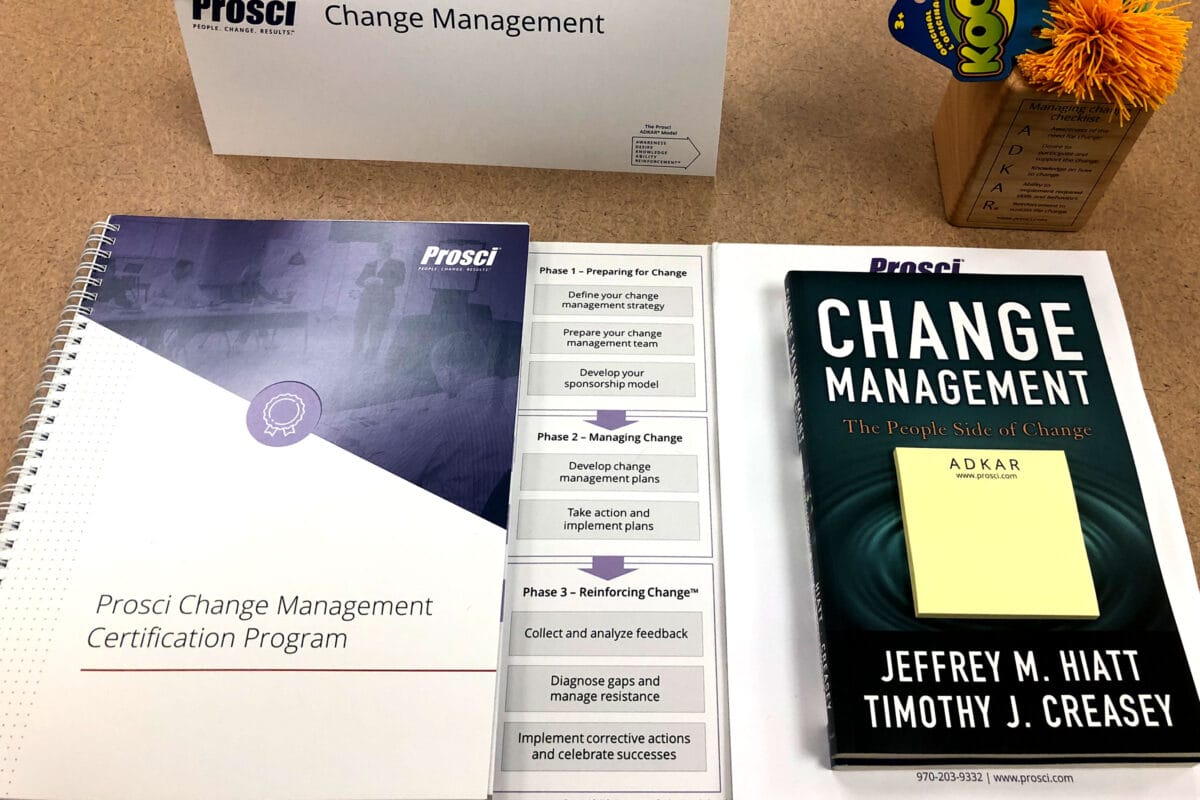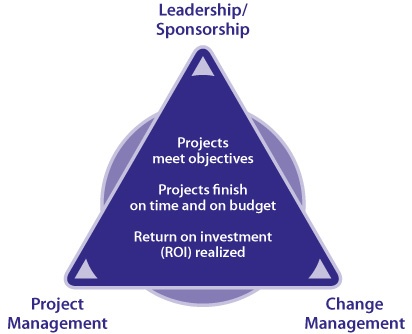Blog
Who Owns Change Management?
|

Blog
Who Owns Change Management?|

Insights from the Prosci Change Management Certification Program
I recently completed the Prosci Change Management Certification program offered through the Minnesota Change Management Network. It was three days of valuable learning about the emerging discipline, including the research, methodology and tools Prosci has developed to establish change management as a recognized practice. While the course was packed with data and actionable learning, one of the most valuable insights came through a lively discussion with my classmates.
Our cohort of communicators, project managers and HR leaders, among others, was deeply engaged, willing to share experiences and challenge ideas. One of the questions we discussed at some length was, “Who owns change management?” The Prosci model calls for equal participation from leadership, project management and change management.

And while every organization can identify its leaders and many have a project management office, dedicated change management resources are still pretty rare. So, if there is no dedicated change management team, where do you find the third champion to complete the trifecta?
A home for change management?
Our Prosci master instructor, Scott Ross, summed it up like this: Not that long ago change management didn’t exist. When it popped up, it took root wherever it could survive – in HR, communication or with interested employees. Today, it still doesn’t have a clear home, but instead of being a suspicious intruder that no one wants, everyone wants to own it. And that’s progress.
Our class debated where the most logical home for change management would be, most of us lobbying for our own departments or specialties, and a few even supporting the notion of specialized consultancies. While we didn’t come to consensus on a best practice, we did agree there are some core characteristics that a successful change manager must have, regardless of where they sit on the org chart.
Dedicated resource
Having a dedicated change resource comes down to availability and accountability. Does the change leader have a clear scope for the project or initiative? Do they have hours dedicated to serving it? And do their other partners agree that the change leader’s role is the people side of the project? Having the time and governance in place to support this role is essential.
Commitment to authentic, timely communication
Communication is a central tenant of the Prosci model. A successful change manager will either have excellent communication skills or will have a highly collaborative relationship with a communication resource also dedicated to the project. In the Prosci ADKAR model, communication is essentially responsible for the top and bottom of the personal change journey — awareness and reinforcement. No project can succeed without progress at both points.
Confidence and credibility
The change manager is, in short, the advocate for the people who are impacted by the change. In order to guide them successfully through the process, the change manager must have credibility with leadership. Their role is to provide counsel and accountability to the change sponsor for active and visible participation in the change. They also must have the confidence to work candidly with the project team to identify and solve barriers to adoption and implementation.
Interestingly, the questions of who owns change management and what makes a good change manager are consistent regardless of the change management model in use. Both Prosci and Kotter’s models view the role of change manager as the guide who helps employees navigate complex, often unsettling circumstances. What is clear, is that the core characteristics of a good change manager, combined with a disciplined approach, are essential to increasing an organization’s chances of achieving meaningful change.
###
About Nicki Gibbs, EVP, Strategy
Nicki is a positively brilliant strategist with a knack for inspiring clients and teams to think and act in powerful ways. Her favorite question is “What if?” Her ability to imagine what’s possible creates contagious enthusiasm that moves businesses forward.

